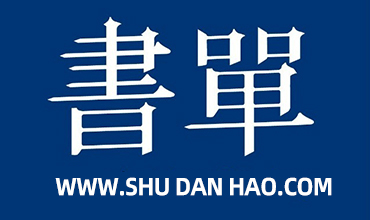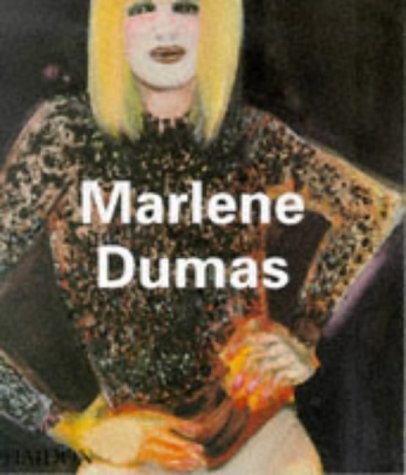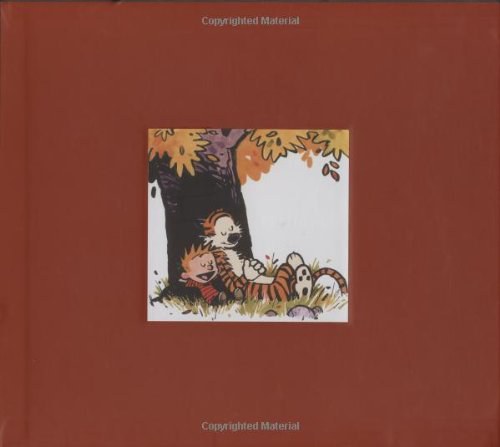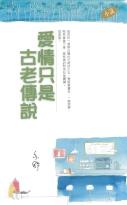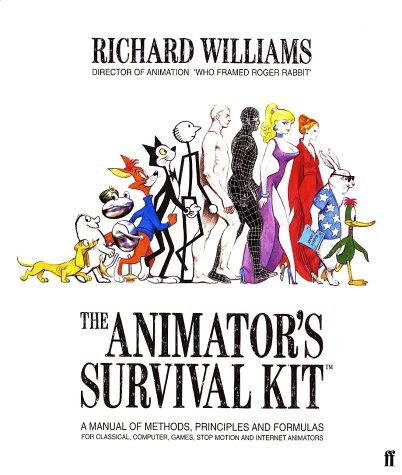
中国少数民族服饰(英文)
书刊介绍
中国少数民族服饰(英文) 内容简介
《中国少数民族服饰:英文》内容简介:Costume is the crystal of human wisdom as well as fruits out of their labor. During human being's long process of evolution and development, minority cos-tumes in China also have had their own changes and development, becoming the cultural symbol for China's 56 nationalities by decorating their living world.
Costume is a visual language and window for civilization.
中国少数民族服饰(英文) 本书特色
《中国少数民族服饰:英文》是中国民族多元文化丛书之一。
中国少数民族服饰(英文)中国少数民族服饰(英文)前言
Costume is the crystal of human wisdom as well as fruits out of their labor. During human being's long process of evolution and development, minority cos-tumes in China also have had their own changes and development, becoming the cultural symbol for China's 56 nationalities by decorating their living world.
Costume is a visual language and window for civilization. Minority costumesin China are rich in ornaments and beautiful in color. Some are long while others are short; some are simple while others are complicated. But as a whole, there is a difference between north robes and south skirts. The northern nomadic people living in the Mongolian Tableland, the Tibetan Tableland and Xinjiang Basingrassland, or the nationalities that have had the life of nomadism and hunting,have chosen their production and living ways belonging to the herding and hunt-ing civilizations as a reason of their living space in the north of the Great Wall for a long time with freezing cold tablelands, deserts, forests and grasslands,such as the Mongols, Tibetan, Ewenki, Oroqen, Manchu, Kazakh, and etc. Theywear robes and boots, which become the symbol for horse-riding nationalities.The minorities in the south living on rice economy are known for their skirts.Even the landforms vary in China's south central, south-west and south-east, asmost of the regions have a warm, humid and rainy climate, the minorities livingin these regions choose rice planting as their living method, such as Tong, Miao,Lisu, Buyi, Pumi, De'ang, Dai, Zhuang and Gaoshan, with their costumes suit-able for their daily life in the style, quality or color. Each nationality's costume is its self-identification. Skirts are popular in the southern minorities, whereasthe style, color and design vary greatly from each other. Dai's tube skirts, shortskirts in Hani and Jinuo, and skirts called "Bafuluoqun" in Va and Tujia have allbecome kinds of decorations and signs distinguishing themselves from others.The women of Shui make an even more outstanding difference from others by putting on skirts outside their long pants.
中国少数民族服饰(英文) 目录
PrefaceChapter I
Minority Costumes in North Eastern Regions and The Inner Mongolian Region
I. Mongolian Costumes
II. Manchu's Cheongsam and Korean Costumes
III. Unique Fish-Skin Clothing and Featured Skin Garments
IV. Hats and Boots for Northern Nationalities
Chapter II
Minority Costumes in North Western Regions
I. Islamic Simple Dress
II. Robes, Qiapan and Kupu in Nationalities in Xinjiang
III. Flexible Pullovers and Embroidered Garments in North Western Nationalities
IV. Yugur's Charming Costume and Tu's Bright Costume
V. Hats and Boots with Northern Characteristics
ChapterⅢ
Minority Costumes In South Western Regions
I. Robes for Multi-nationalities on the World Roof
II. Features of the Colorful "Southern Skirts"
II1. Pullovers and Festival Garments
IV. Rich Hair Styles and Hats
Chapter IV
Minority Costumes In South Central And South Eastern Regions
I. Costumes for Zhuang and Maonan
I1. Colorful Yao Costumes
II1. Tu's Xilankapu and She's Phoenix Costume
IV. Costumes for Li, Jing and Mulao Nationalities%
中国少数民族服饰(英文) 节选
The traditional Korean suit-dress has a feature of short coats and long skirts.The collar of the coat (zegaoli) is connected with the front into an oblique line,open with right front without buttons; long to the bosom, at the present coat'sthird button position. The skirt is as long as reaching to the knees or to the feetaccordingly. The sleeves have a large arc, with a butterfly knot using long silkribbon tying the two fronts. Cloth strips in various colors are used to embroiderthe collar lines and cuffs. Colorful silk and satin are embroidered in cuffs andfront edges of coats for young women and girls. The coat assorts with long skirt,setting off women's curving beauty. Their skirts are called "qima" in Korean,classified as tube skirts and tangling skirts which have the difference of longskirts and short skirts. The tube skirts sewed up, different from ones in other na-tionalities, as they have many fine pleats at the waist in order to suit the waist-body, connected above with a small white vest open in the front with buttonslike a pullover. This kind of skirts is as long as reaching the knees, suitable forlaboring and walking. The tangle skirt is wrapped for the lower body shaped likea helix; the left lower corner will be lifted and tucked into the girdle, suited witha white shirt inside. Young women are found of tube skirts and short skirts whileold women most of the time wear tangle skirts and long skirts. Yellow coatsand pink skirts are typical for traditional suit dress. Materials for making youngwomen's coats are very colorful.
中国少数民族服饰(英文) 目录
PrefaceChapter I
Minority Costumes in North Eastern Regions and The Inner Mongolian Region
I. Mongolian Costumes
II. Manchu's Cheongsam and Korean Costumes
III. Unique Fish-Skin Clothing and Featured Skin Garments
IV. Hats and Boots for Northern Nationalities
Chapter II
Minority Costumes in North Western Regions
I. Islamic Simple Dress
II. Robes, Qiapan and Kupu in Nationalities in Xinjiang
III. Flexible Pullovers and Embroidered Garments in North Western Nationalities
IV. Yugur's Charming Costume and Tu's Bright Costume
V. Hats and Boots with Northern Characteristics
ChapterⅢ
Minority Costumes In South Western Regions
I. Robes for Multi-nationalities on the World Roof
II. Features of the Colorful "Southern Skirts"
II1. Pullovers and Festival Garments
IV. Rich Hair Styles and Hats
Chapter IV
Minority Costumes In South Central And South Eastern Regions
I. Costumes for Zhuang and Maonan
I1. Colorful Yao Costumes
II1. Tu's Xilankapu and She's Phoenix Costume
IV. Costumes for Li, Jing and Mulao Nationalities%
中国少数民族服饰(英文) 节选
The traditional Korean suit-dress has a feature of short coats and long skirts.The collar of the coat (zegaoli) is connected with the front into an oblique line,open with right front without buttons; long to the bosom, at the present coat'sthird button position. The skirt is as long as reaching to the knees or to the feetaccordingly. The sleeves have a large arc, with a butterfly knot using long silkribbon tying the two fronts. Cloth strips in various colors are used to embroiderthe collar lines and cuffs. Colorful silk and satin are embroidered in cuffs andfront edges of coats for young women and girls. The coat assorts with long skirt,setting off women's curving beauty. Their skirts are called "qima" in Korean,classified as tube skirts and tangling skirts which have the difference of longskirts and short skirts. The tube skirts sewed up, different from ones in other na-tionalities, as they have many fine pleats at the waist in order to suit the waist-body, connected above with a small white vest open in the front with buttonslike a pullover. This kind of skirts is as long as reaching the knees, suitable forlaboring and walking. The tangle skirt is wrapped for the lower body shaped likea helix; the left lower corner will be lifted and tucked into the girdle, suited witha white shirt inside. Young women are found of tube skirts and short skirts whileold women most of the time wear tangle skirts and long skirts. Yellow coatsand pink skirts are typical for traditional suit dress. Materials for making youngwomen's coats are very colorful.
中国少数民族服饰(英文) 节选
The traditional Korean suit-dress has a feature of short coats and long skirts.The collar of the coat (zegaoli) is connected with the front into an oblique line,open with right front without buttons; long to the bosom, at the present coat'sthird button position. The skirt is as long as reaching to the knees or to the feetaccordingly. The sleeves have a large arc, with a butterfly knot using long silkribbon tying the two fronts. Cloth strips in various colors are used to embroiderthe collar lines and cuffs. Colorful silk and satin are embroidered in cuffs andfront edges of coats for young women and girls. The coat assorts with long skirt,setting off women's curving beauty. Their skirts are called "qima" in Korean,classified as tube skirts and tangling skirts which have the difference of longskirts and short skirts. The tube skirts sewed up, different from ones in other na-tionalities, as they have many fine pleats at the waist in order to suit the waist-body, connected above with a small white vest open in the front with buttonslike a pullover. This kind of skirts is as long as reaching the knees, suitable forlaboring and walking. The tangle skirt is wrapped for the lower body shaped likea helix; the left lower corner will be lifted and tucked into the girdle, suited witha white shirt inside. Young women are found of tube skirts and short skirts whileold women most of the time wear tangle skirts and long skirts. Yellow coatsand pink skirts are typical for traditional suit dress. Materials for making youngwomen's coats are very colorful.
相关推荐
-

厄瓜多尔的丛林游牧部落:瓦奥拉尼人
厄瓜多尔的丛林游牧部落:瓦奥拉尼人 本书特色 瓦奥拉尼人是世界上*孤独的民族,他们过着与世隔绝的生活。瓦奥拉尼人的世界虽不是天堂,却是一片没有被外界做作的行为规...
-

日本相扑与力士
日本相扑与力士 本书特色 本书是《人文日本新书》系列中的一本,该系列是一套具有丰富文化内涵与深刻人文精神的新型文化学术类图书,每册突出一个人文主题,小题精作。其...
-

古语文例释-(修订本)
古语文例释-(修订本) 本书特色 本书是王泗原先生研究周秦两汉典籍,继承前修,力图解决古籍古语文疑难,以例释的形式逐条按类排比而成的随笔集。分“古语文魏晋时期有...
-

墨客列传-文房之美.墨
墨客列传-文房之美.墨 本书特色 墨作为中国书画中颜色的来源,带着深厚的文化内涵,走过了千百年的岁月。墨里有说不尽的故事,也有丰富的历史。从墨里可以窥见中国的变...
-

日落大道
精彩摘录他会因为陈泊桥不喜欢他,心中难以克制地疼痛万分,或者因为太喜欢陈泊桥而辗转反侧,但好像还是直到此刻,章决才了解心
-

安徽大学汉语言文字研究丛书:陈秉新卷
安徽大学汉语言文字研究丛书:陈秉新卷 本书特色陈秉新、黄德宽编写的《安徽大学汉语言文字研究丛书(陈秉新卷)》共分为五个方面。一是古文字考释,共24篇,包括:读金...
-

不是為了快樂
修持,不是要讓你「自我感覺良好」,那只是滿足了你世俗的自信心;修持,不是要讓你活得開心快樂,那只是曇花一現的幻覺。「前行修持指引」集結精練了歷代大成就者的解脫心...
-

百谱千词注
百谱千词注 内容简介 本书以当今词坛普遍习用的龙榆先生编撰的《唐宋词格律》为蓝本,选出常用词派一百种,可供读者参考。百谱千词注 目录 **类 平韵格(谱四十三调...
-

敦煌学术史-事件.人物与著述
敦煌学术史-事件.人物与著述 内容简介 《敦煌学术史丛稿》一书收录了刘进宝教授从1988年到2009年间在各类学术期刊、杂志(如《历史研究》、《敦煌研究》、《南...
-

鲁迅与中国传统文化-接受 偏离 回归
鲁迅与中国传统文化-接受 偏离 回归 本书特色 本书分三章,按时间顺序,对鲁迅先生传统文化的接受和关系进行了严密地研究。该书以传统文化和民俗文化的翔密描述,历史...
-

海鷗
本書是這部經典劇作出版120週年紀念版(1896-2016),俄文原典直譯,豐富注釋,邀集藝文界作「海鷗與我」紀念短文,並收錄多篇專文導讀與評介文章。這齣劇不僅...
-

采购管理实务
《采购管理实务》内容简介:本书主要内容包括采购基础、采购组织设计与采购人员管理、采购计划管理、招标采购、集中采购与电子采购
-

巫·舞·八卦
巫·舞·八卦 内容简介 在中国古代,巫者都善舞,是*早的舞蹈家。本书讲述了巫祀中的舞祭;手势·禹步·八卦舞谱;从舞蹈的角度谈八卦的审美功能等内容。巫·舞·八卦 ...
-

回顾与展望
章开沅,男,1926年7月生于安徽芜湖。著名历史学家、教育家、思想家,美国奥古斯坦那学院荣誉法学博士,日本创价大学与关西大学名誉博士。早年就读于金陵大学,后长期...
-

走出中世纪
走出中世纪 内容简介 本书是作者关于中国思想文化史的文稿集,从文化史的视角对中国社会、中国传统文化从中世纪向近代过渡的历史进程,作出了独特而新颖的阐述。走出中世...
-

俄汉语言文化习俗探讨
俄汉语言文化习俗探讨 内容简介 语言既是文化的载体,又是文化的组成部分。一切文化活动、文化创造和文化发展都离不开语,语言是文化产生、传承与发展的重要形式。语言作...
-

幽玄·物哀·寂
《幽玄·物哀·寂》内容简介:大西克礼是日本现代美学史上有重要贡献的、具有自己独特而系统的美学理论体系的美学家,是日本现代美
-

大师与传统
大师与传统 本书特色 《大师与传统》主要围绕中国文化的特性、传统、信仰、人物、经典、智慧、国学内涵等面相,以及二十世纪学术大师的流风余韵,多层次地展开探讨。孔子...
-

大蒜之书-探索你熟知却不真正了解的大蒜
大蒜之书-探索你熟知却不真正了解的大蒜 本书特色 《大蒜之书:探索你熟知却不真正了解的大蒜》包括两大部分。*部分统称为关于大蒜的传说,第二部分是作者收集整理的世...
-

汉字形义考源
汉字形义考源 本书特色 ★32开平装,武汉出版社出版,1996年1月一版一印★汉字形义考源是古文字研究中的基础工程,以唯物论和辩证法考证未识之字和已识之字的形义...

